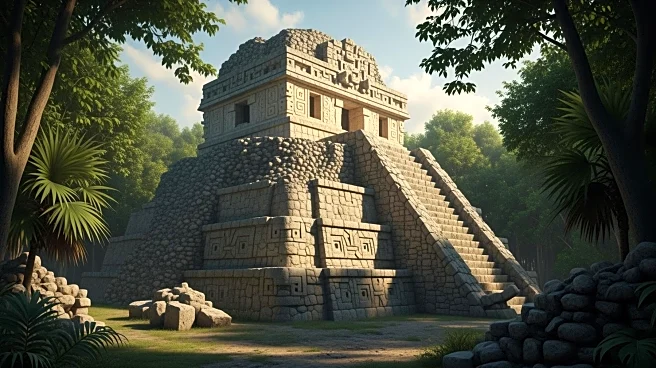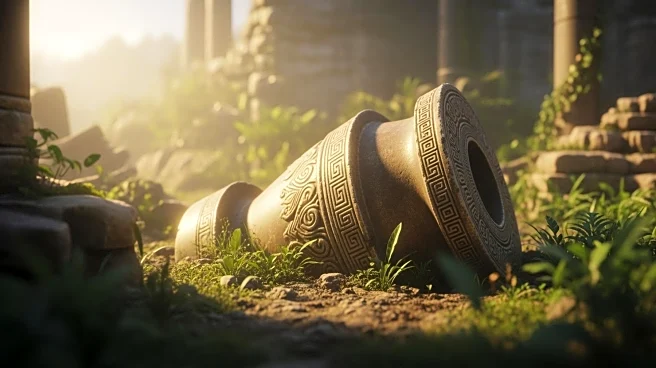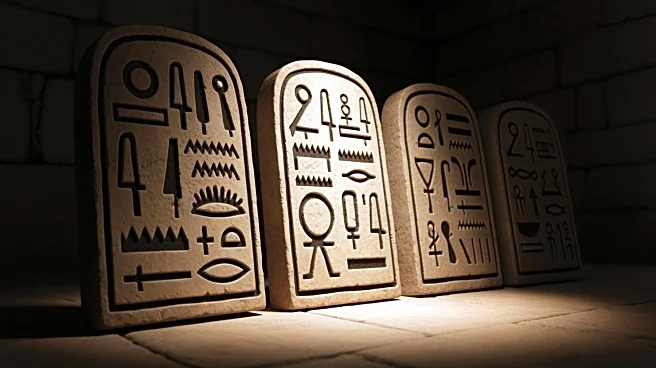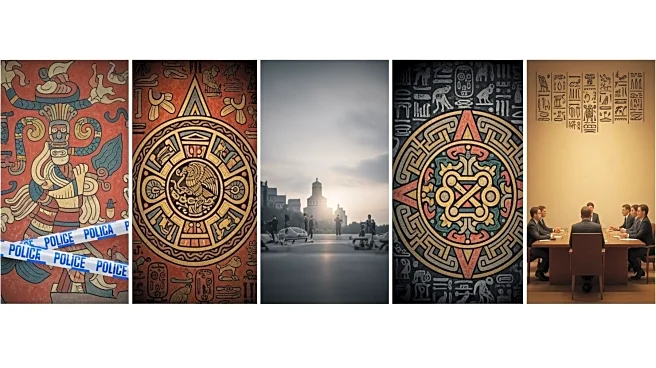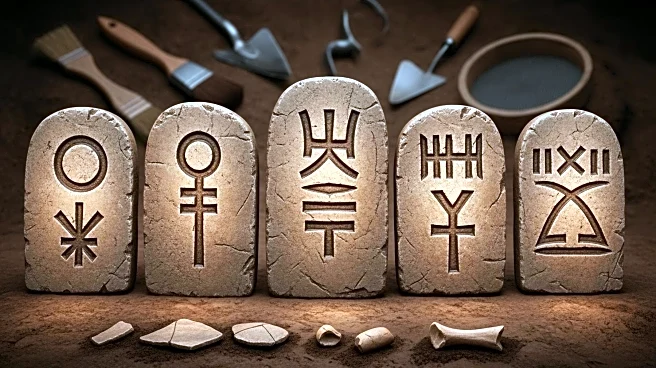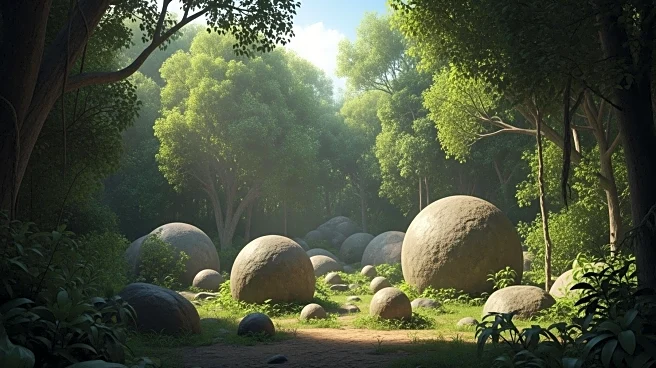What's Happening?
Archaeologists from Mexico's National Institute of Anthropology and History (INAH) have discovered a remarkably preserved ancient city on Guerrero's Costa Chica, dating back over 1,200 years. Named Paso
Temprano by researchers and Corral de Piedra by locals, this site offers insights into the Epiclassic period of Mesoamerican history. The city spans over 1.2 kilometers and features defensive walls, ceremonial areas, and residential compounds. The architecture, characterized by Mixtec-facing construction, includes a 49-meter-long ball court and ceremonial spaces, indicating the city's spiritual and practical significance. The discovery provides a glimpse into the urban planning and societal structure of ancient Guerrero, with a clear social hierarchy reflected in the city's layout.
Why It's Important?
The discovery of Paso Temprano is significant as it enhances understanding of the cultural and historical context of ancient Mesoamerica. The site's preservation allows researchers to study the social and political structures of the time, offering insights into the lives of its inhabitants. The presence of ceremonial spaces and a ball court suggests the city was a cultural and spiritual hub, possibly influencing or being influenced by other Mesoamerican civilizations. This finding could redefine the understanding of the region's history, potentially identifying a distinct local archaeological culture that thrived between the Epiclassic and Early Postclassic periods.
What's Next?
Ongoing research at Paso Temprano aims to uncover more about the city's origins and its builders. Archaeologists hope to determine whether the city was part of a broader cultural network or a unique civilization. Supported by INAH, further excavation is expected to provide additional insights into the cultural and historical significance of the region. As research progresses, new discoveries may reveal more about the city's mysterious past and its role in ancient Guerrero.
Beyond the Headlines
The discovery of Paso Temprano raises questions about the identity of its original builders, as historical evidence suggests later occupation by the Amuzgo and Mixtec peoples. The site's remarkable preservation offers a unique opportunity to explore the pre-Hispanic past of the region, potentially uncovering connections to other Mesoamerican cultures. The architectural sophistication and social organization reflected in the city's design highlight the complexity of ancient societies and their cultural achievements.
